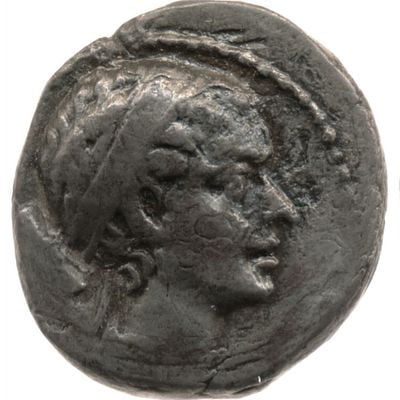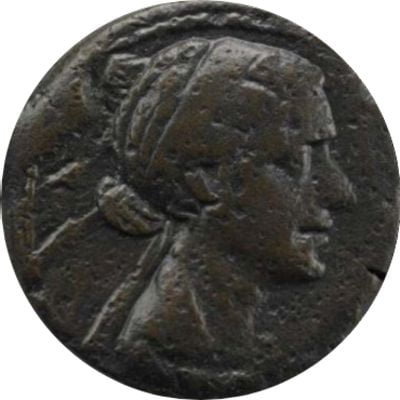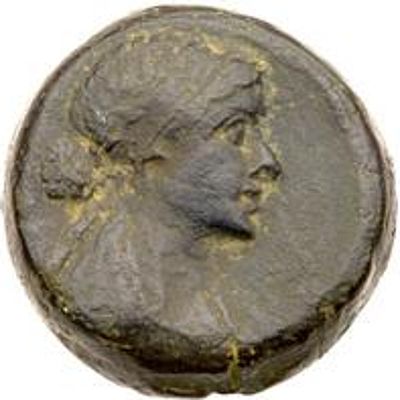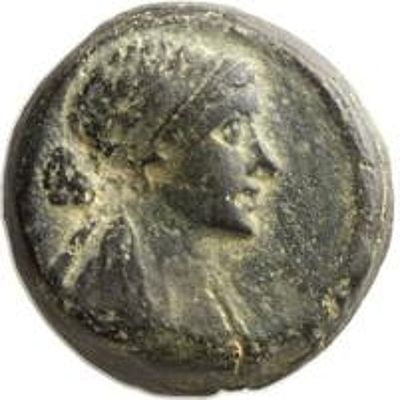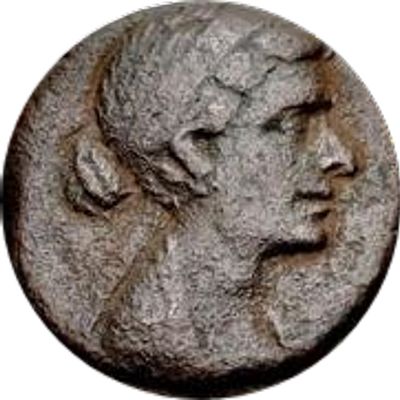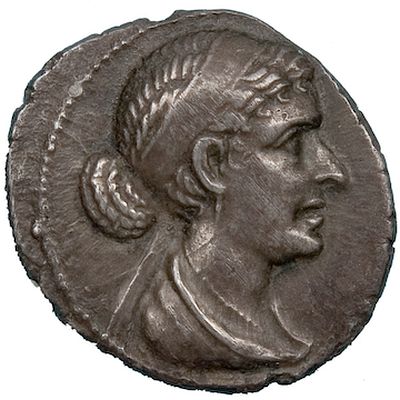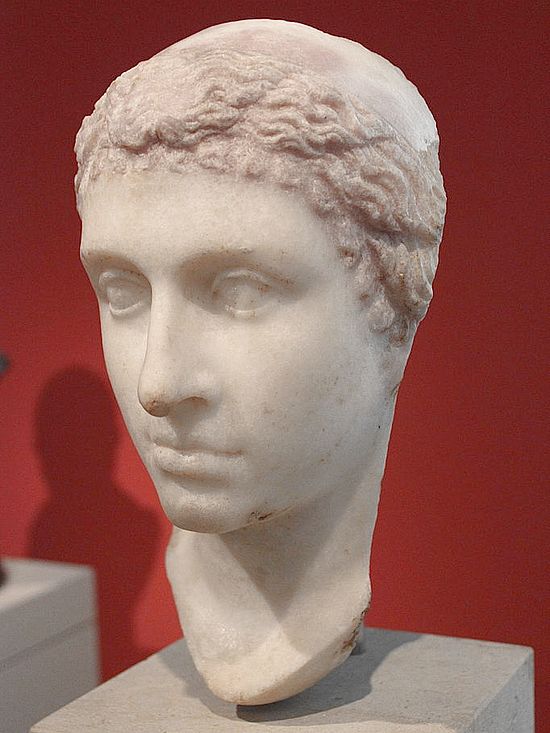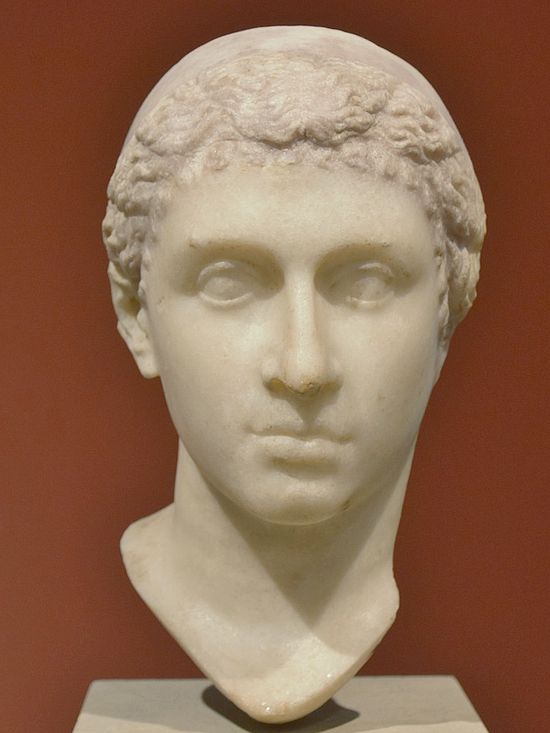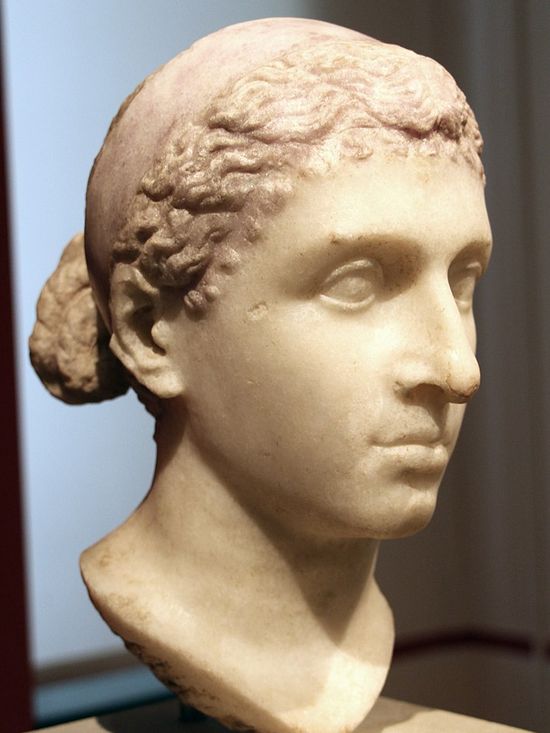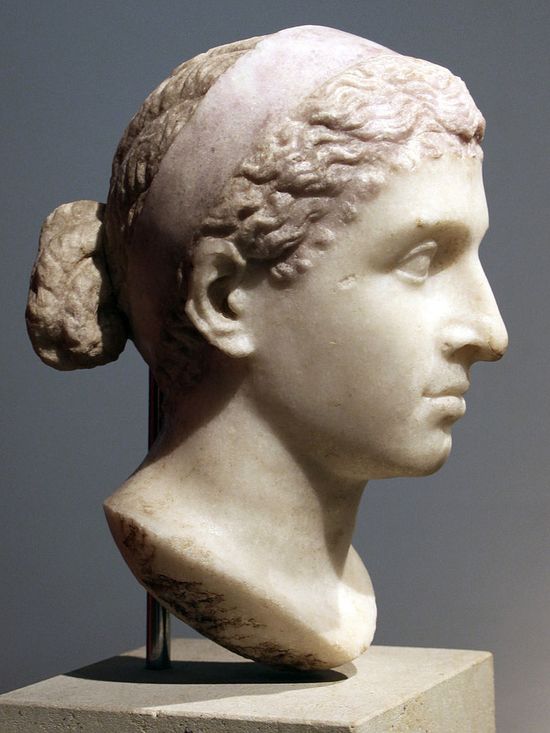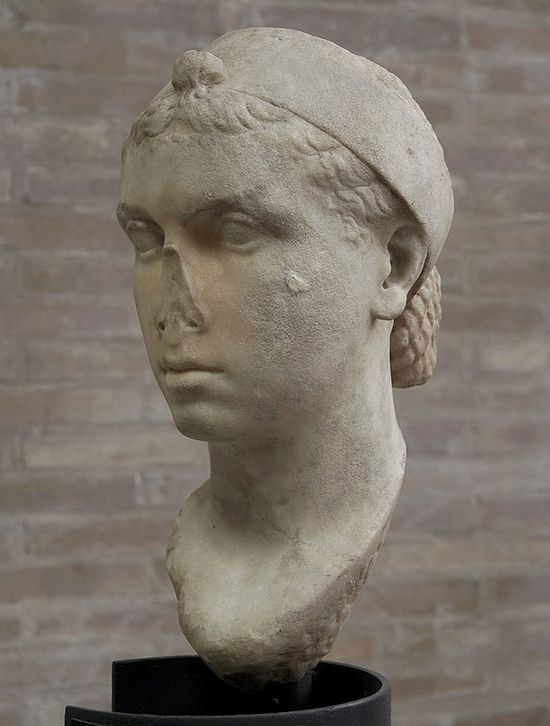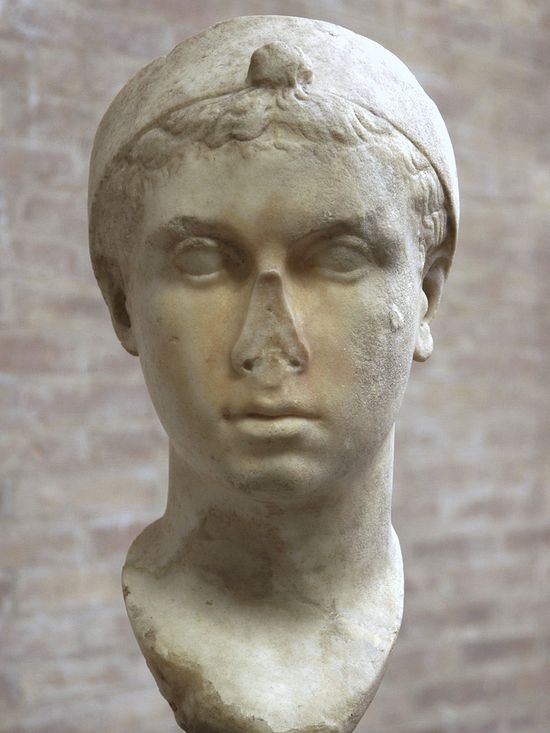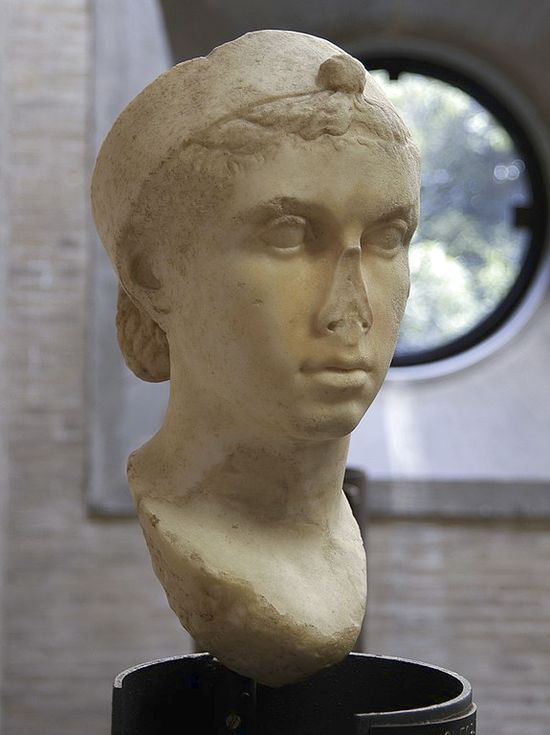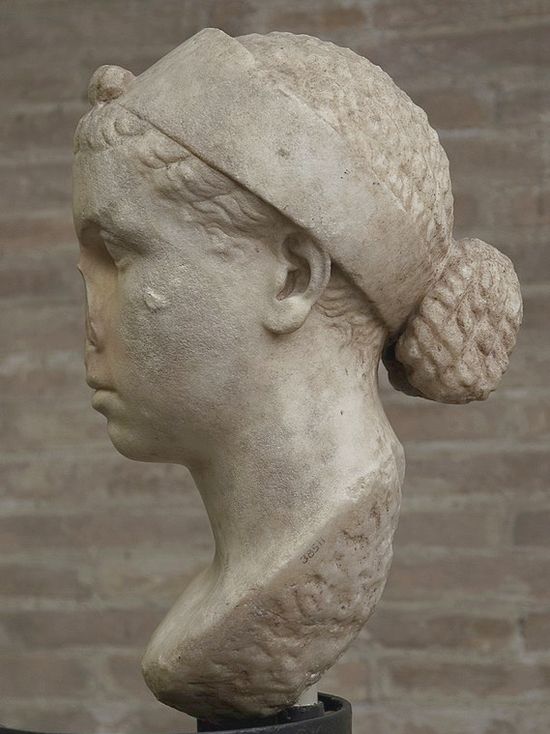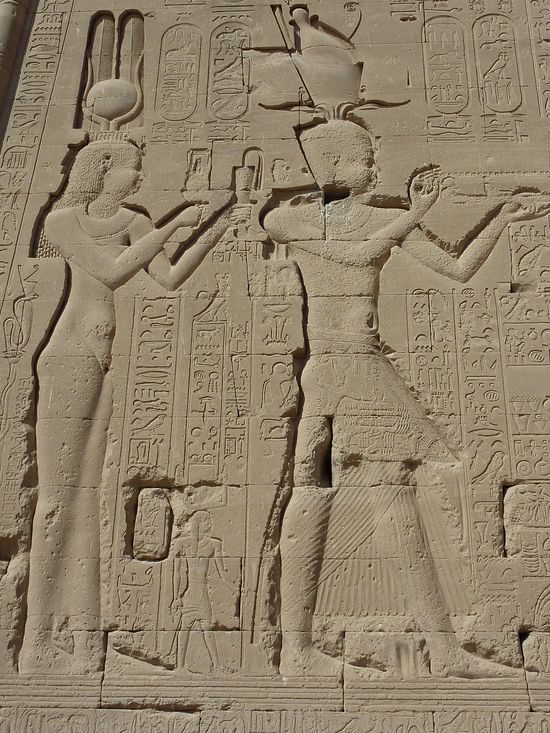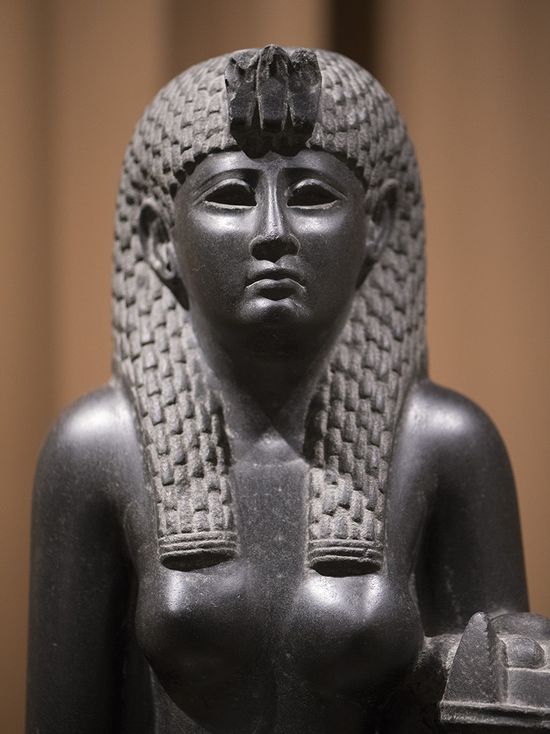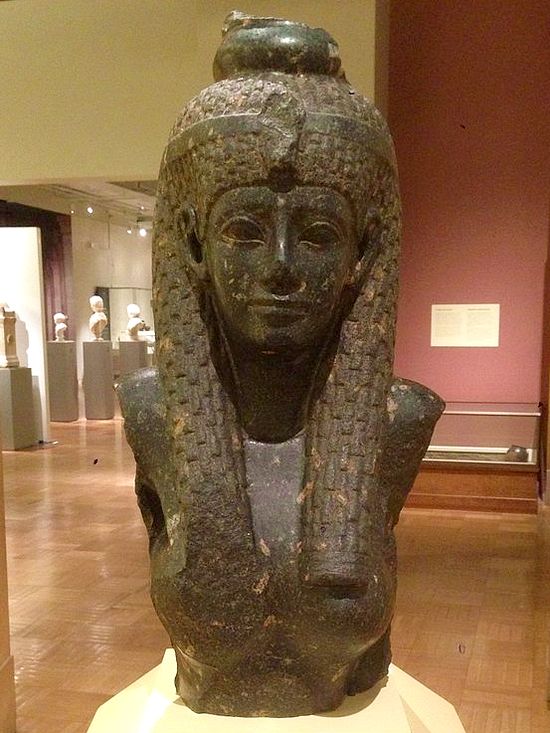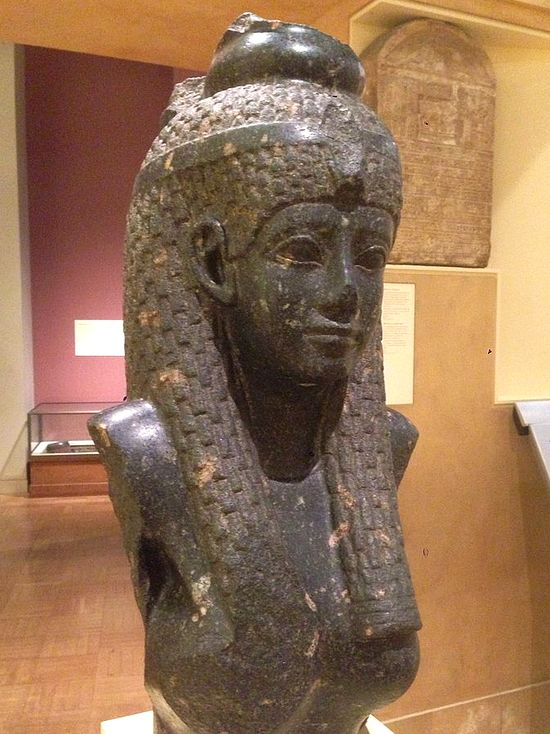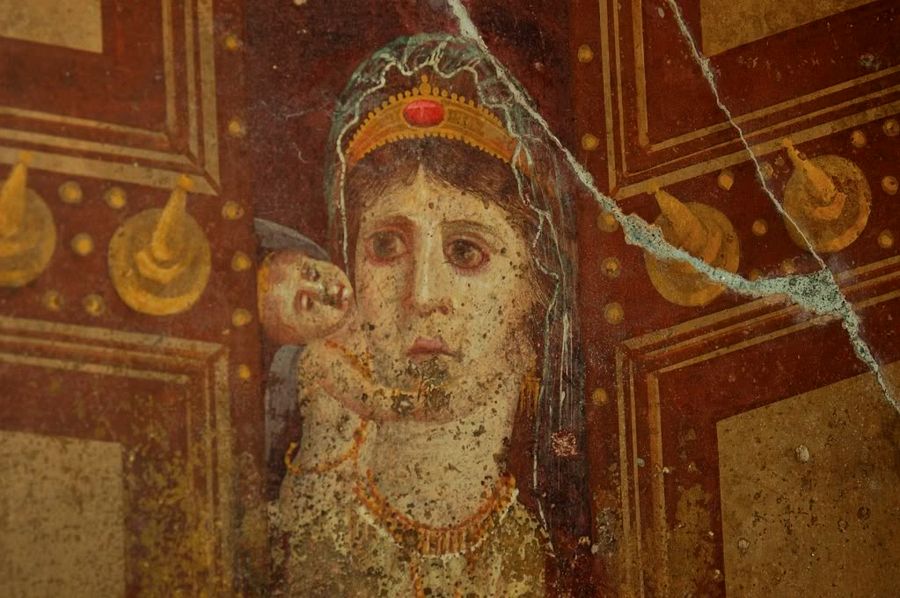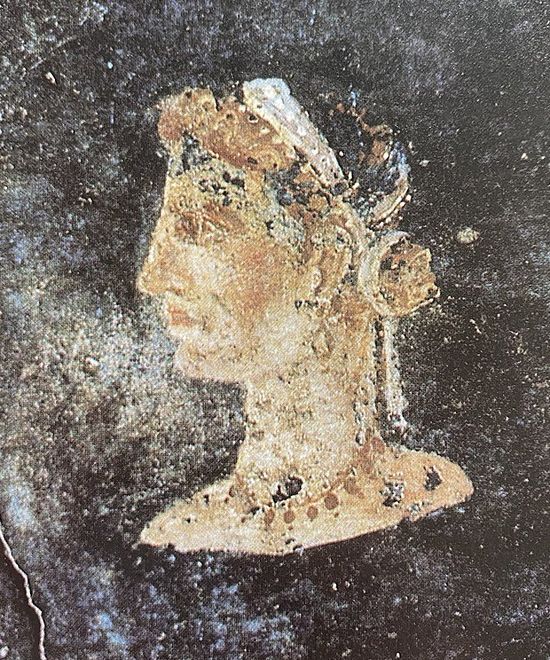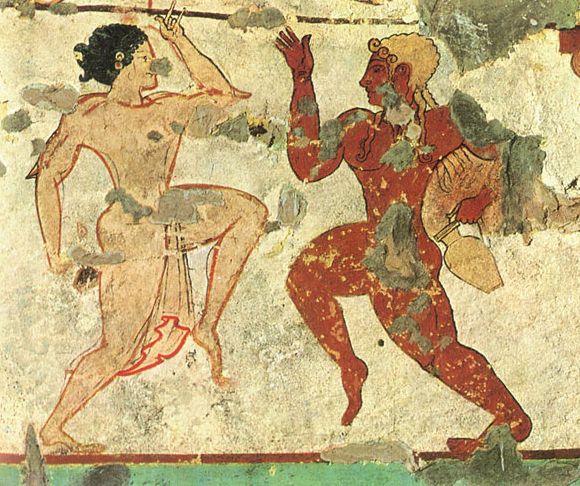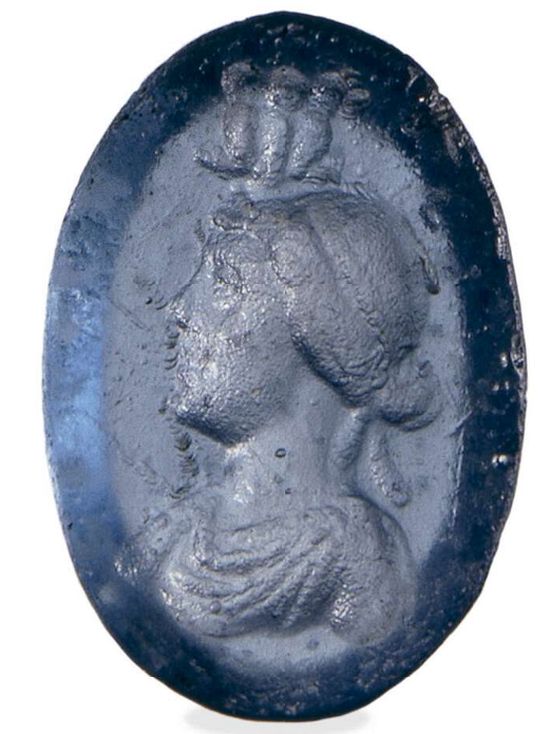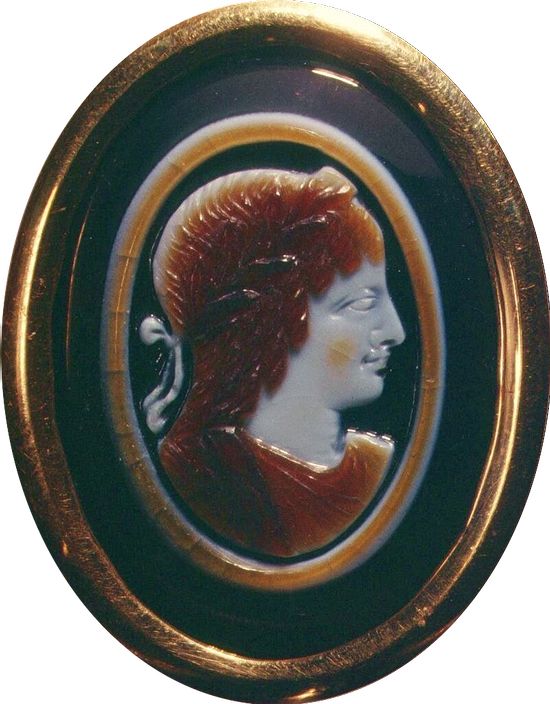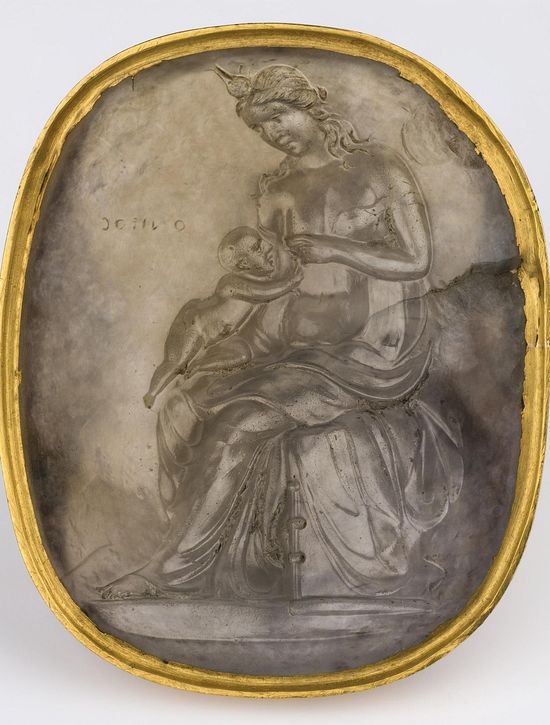As famous as Cleopatra is, most of us do not know what she looked like. There is the idea that all her images have been lost. Yet, plenty of her coins survive, as well as a few of her statues. And there are also other ancient objects that represent her.
So let’s review these objects and find out what Cleopatra VII, the famous queen of Egypt, really looked like.
The coins with Cleopatra’s image
Cleopatra issued these coins herself. (See all her coins)
To know what Queen Cleopatra VII really looked like, look no further than these coins.
Cleopatra issued these coins herself, first in Egypt, then in Greece. And it is certain that it is her own portrait that she stamped on them. She was in her twenties here (40’s BC).
Many of these coins, probably millions, circulated through her kingdom. The ones shown here are original and are kept in museums around the world and in private collections.
If you want to see more of her coins, go here.
- Read more about Antony’s looks: What Julius Caesar and 14 Other Famous Romans Looked Like
Cleopatra’s statues and reliefs
The Roman statues
Roman portrait of Cleopatra VII. Made between 40 and 30 BC when she was in her thirties. Kept at the Altes Museum in Berlin, Germany.
Another surviving Roman statue of Cleopatra, made between 40 – 30 BC. Kept at the Vatican Museums in Vatican City.
Cleopatra’s Roman statues are the best bet to know what the queen really looked like.
When Cleopatra was alive, the Romans liked ultra-realistic portraiture. Their statues tried to capture the unique facial features of a person; they even copied the person’s ‘flaws’ such as asymmetrical or disproportionate features and wrinkles.
There were plenty of busts and statues of Cleopatra floating around in the Roman world, including in Rome itself and in Egypt, according to the ancient authors. But only two busts have been found so far.
So, is it really Cleopatra in these two Roman busts? Most scholars -but not all- believe it is. She is even wearing the royal diadem, which is a dead giveaway that the woman portrayed is a Hellenistic queen (there weren’t many of those around in that period, and Cleopatra fits the bill). The diadem is that band on her head. Nowadays queens and kings use crowns, but back then, monarchs of Hellenistic culture used these diadems.
These statues were made (c. 35 BC) when Cleopatra was in a relationship with the Roman Mark Antony. At the time, he was the head of state of Rome.
The Egyptian statues
Cleopatra erected statues of herself all over Egypt; plenty of them in Egyptian style. And some of them survive.
Yet, these are not so great at showing what the queen looked like.
Egyptian art was mostly symbolic, especially when it came to representing the monarchs and gods.
The purpose of these statues was partly to show the continuity of the Kingdom of Egypt, which, astoundingly, had lasted 3,000 years at this point.
So the first and last pharaohs of Egypt are represented in the same manner. They are shown with the same body and facial features, more or less.
Thus, these sculptures do show Cleopatra VII but do not tell much about her unique physiognomy.
- Read also: Was Julius Caesar Handsome?
Paintings showing Cleopatra
Cleopatra lived for two years in Rome while she was in a relationship with Julius Caesar. She was in her early twenties at the time (46 – 44 BC). And her presence fueled an Egyptomania craze.
The Romans were already predisposed in favor of Egypt since the cult of Isis, an Egyptian goddess, had been spreading through Italy for a while.
And in the city of Pompeii, near Rome, the cult was strong. They even had a temple dedicated to Isis and many paintings representing the goddess.
Cleopatra identified with Isis, and she dressed like the goddess in public events in Egypt. So it is not surprising that the followers of the cult were enthusiastic about her.
Three paintings found in Pompeii and its surroundings are thought to represent Cleopatra.
One of the paintings seems to copy a sculpture of Cleopatra.
Julius Caesar placed the gigantic statue of his lover Cleopatra in a temple in Rome -the Roman writers report the move unleashed a scandal in the city. In the statue, Cleopatra is portrayed as Venus (the Roman version of the goddess Isis) with a little boy cupid on her shoulder. Some believed the boy represented Caesarion, the son of Caesar and Cleopatra.
And this Pompeian painting shows a woman with a face similar to that seen in Cleopatra’s coins. She is wearing Cleopatra’s distinct hairstyle (a ‘melon’ hairdo), has a cupid on her shoulder, and is coming out of what could be a temple. Plus, she wears a royal diadem. So the painting seems to be mimicking the statue.
Furthermore, Egyptian boats are depicted in the same room. And there is also a painted procession, like those that took place in Egypt. So the probability that this painting represents Cleopatra is high.
The other two paintings found at Pompeii and Herculaneum (a town near Pompeii) show a similar woman. But they do not have the cupid or the other props.
One of these portraits is in a house full of Egyptian motives. The woman is nearby a painted sphinx. She might be Cleopatra. Or perhaps, the owner of the house was influenced by Cleopatra’s fashion sense.
These paintings would not be unique. There were public paintings that portrayed Cleopatra in the Roman world. The Greek writer Plutarch was born a few decades after Cleopatra’s death. He reports seeing these paintings.
Cleopatra in cameos and intaglios
Cameos and intaglios are not very helpful when it comes to picturing what Cleopatra looked like. Some of these are tiny intaglios meant to be used in a ring.
Because of the material and how small the surface is, it was difficult to create an accurate portrait. The result in these ones is a pretty generic profile.
Nevertheless, they do represent Cleopatra VII Ptolemy. And they were made during her lifetime or soon after her death.
How the ancient writers describe Cleopatra
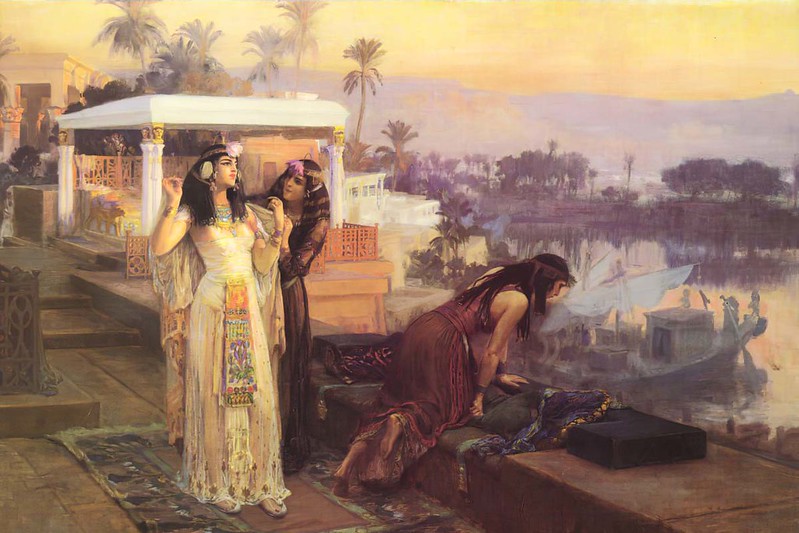
Annoyingly, the ancient authors do not describe Cleopatra’s physical features. They only say she was beautiful and captivating.
Only Lucan, in one poem, mentions a physical trait of hers; he says her skin was very white:
“…Then came legions of slaves [at Cleopatra’s banquet in Alexandria].
They varied in skin color and age;
some had the dark hair of Libya and others had hair so tawny
that Caesar denied he had ever seen such red hair
in the lands watered by the Rhine; some were dark-skinned
and had woolly hair that receded from their foreheads;…
There the monarchs reclined along with Caesar
whose power was greater; and the queen [Cleopatra],
her dangerous beauty enhanced by cosmetics,…
she wore riches on her head and neck and felt the weight of her jewelry.
Her snow-white breasts shone through diaphanous Sidonian cloth…”
Lucan, Pharsalia 10, 125-145
Lucan may have had inside information on Cleopatra since he was a good friend of Emperor Nero. And Nero’s family was entangled with Cleopatra’s. Actually, they were related by blood.
Remember Mark Antony, Cleopatra’s Roman husband? Well, he had a child, Antonia, from a previous marriage. Antonia and the children of Cleopatra, her half-siblings, were raised together in the same house. And Antonia was Nero’s grandmother.
Also, Nero’s stepfather was raised by Cleopatra’s fiercest enemy, Octavian.
Yes, the genealogy gets crazy. It is enough to say that Nero must have grown up hearing about Cleopatra from both his mother and step-father, both of whom were very well informed about Cleopatra’s intimacies. And poet Lucan, as his friend, was likely privy to them.
Furthermore, Lucan himself, like most Romans, would have known what Cleopatra looked like. Tens of thousands of Romans had seen her in person both in Rome and in Egypt a few decades before. So in Lucan’s time, there was still a vivid memory of Cleopatra’s appearance. Thus, Lucan’s description of Cleopatra may be accurate.
(Read next: The Truth About Cleopatra’s Race: Was She Black, White, or Mixed?)
Of the artifacts above, the coins and the Roman statues are the ones that more reliably portray Cleopatra.
At first, they may seem quite different from one another, but at a second glance, one notices they all render the same features.
Both coins and marble busts show a woman with a straightish forehead that slants backward slightly. Her face is somewhat long, probably oval. She has deep-set eyes, and they are probably big. Her eyebrows sit immediately above her eyes. She has a long, aquiline nose; full, shapely lips; and a rounded, strongish chin. Her neck is short and somewhat thick.
More Articles
